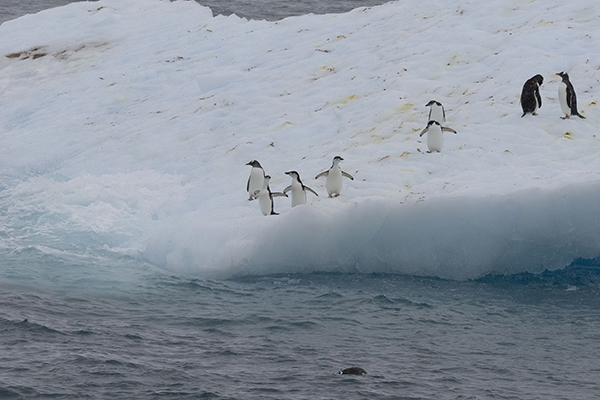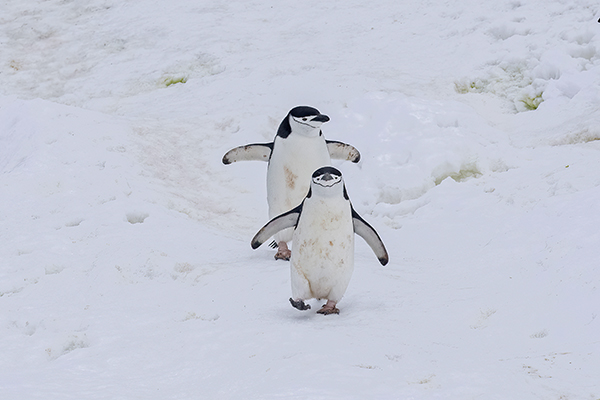After being at sea for a few days everyone on board was excited by the prospect of our first zodiac outings - and our first penguin colonies in the South Shetlands. We'd seen both Chinstrap & Gentoo Penguins on icebergs as we got closer to the South Shetlands.
 |
| Above: Gentoo and Chinstrap Penguins on icebergs |
 |
| Chilean O'Higgins Antarctic base. |
 |
| Plancius. |
The first zodiac outing was to get close to the impressive basalt columns of Edinburgh Hill at the end of the McFarlane Straight followed by an afternoon visit to the Chinstrap Penguin colony on Half Moon Island.
The rules are very strict for visitors to Antarctica. You've got to stay at least 5 metres from any wildlife and do nothing to disturb them. Penguin rookeries aren't for the faint hearted. Their diet is mainly Krill which gives their poo a pink colour. They aren't fussy where they poo and the presence of a rookery can be determined from satellites by the presence of a 'pink carpet'. The smell hits you first followed closely by the noise as youngsters call for their parents and adults argue among themselves. Biosecurity is taken very seriously and we had to wash our boots and outer layers before leaving the colonies and then use Virkon disinfectant baths when we arrived back on board the Plancius. We weren't allowed to kneel or sit and our bags had to be kept off the ground at all times. Unfortunately bird -flu has arrived in Antartica and all that can be done is slow the spread. I'm used to these protocols through ringing with SCAN in the UK but many people were surprised at the lengths they had to go to disinfect their boots and outer layers. We had a 'bio - security' session on board where all our kit had to be checked and cleaned of any organic matter - including zips, velcro and rucksack webbings. Only when everything had been cleaned and checked were you signed off to go ashore.
 |
| Chinstrap with sat tag. |

























































































No comments :
Post a Comment